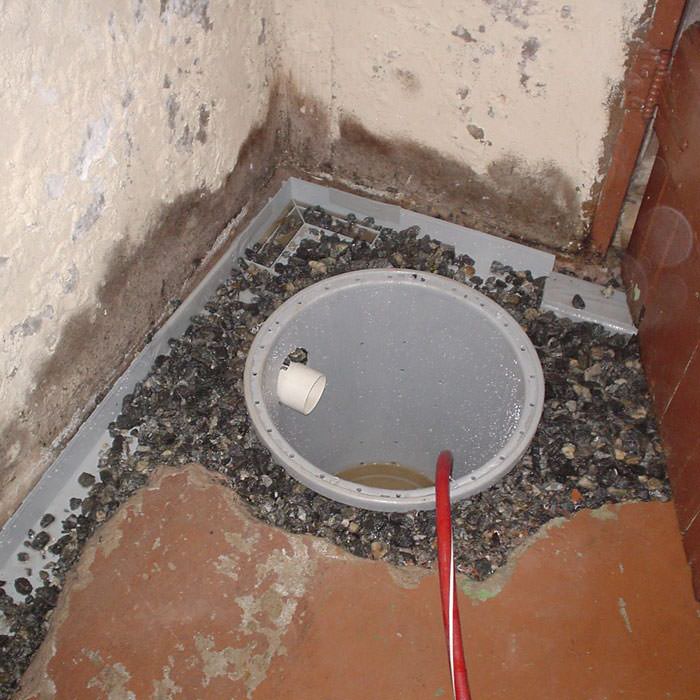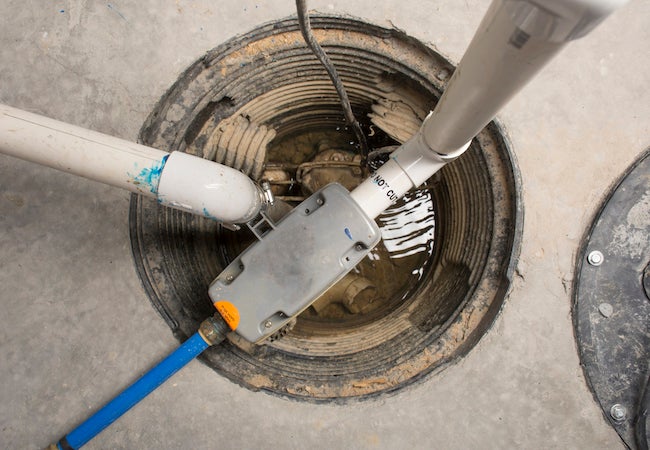The Comprehensive Guide to Taking Care of a Sump Pump
The Comprehensive Guide to Taking Care of a Sump Pump
Blog Article
We've stumbled on this great article about How to Care for Your Sump Pump below on the web and felt it made perfect sense to talk about it with you on my blog.

Sump pumps are critical elements in lots of homes, specifically in areas vulnerable to flooding or too much moisture. They help protect against water damage by effectively getting rid of excess water from basements or crawl spaces. However, like any other appliance, sump pumps require normal maintenance to guarantee they function effectively when required the most. Cleansing your sump pump is a vital part of its upkeep, and comprehending how to do it effectively can conserve you from costly repair services and prospective disasters.
Introduction
Keeping a clean sump pump is vital for its appropriate functioning and durability. Disregarding this crucial job can cause clogs, malfunctions, and eventually, water damages to your building. Consequently, discovering exactly how to clean a sump pump is critical for house owners that rely on these devices to maintain their cellars dry and safeguarded.
Recognizing the Sump Pump
Prior to diving into the cleaning process, it's necessary to have a standard understanding of just how a sump pump works. Usually installed in a pit or basin below the cellar flooring, a sump pump contains a number of vital elements, consisting of a pump, a float button, and a discharge pipeline. When water collects in the pit, the float switch triggers the pump, which then pumps the water out with the discharge pipe, far from the structure's foundation.
Signs of a Dirty Sump Pump
Understanding when your sump pump needs cleaning is crucial for protecting against potential malfunctions. Some typical indicators that indicate an unclean sump pump consist of weird sounds throughout procedure, reduced water flow, and noticeable particles in the pit. If you see any of these symptoms, it's necessary to clean your sump pump quickly to prevent any more concerns.
Preparing for Cleansing
Prior to you begin cleansing your sump pump, it's necessary to take some security preventative measures. Start by shutting down the power to the pump to stay clear of any electric accidents. Additionally, put on proper protective equipment, such as gloves and goggles, to secure yourself from dust, particles, and potential microorganisms.
Detailed Guide to Cleaning a Sump Pump
Shutting Off the Power
Begin by disconnecting the power supply to the sump pump to prevent any type of crashes while cleansing.
Getting Rid Of Particles and Dust
Make use of a container or an inside story to get rid of any kind of noticeable debris, dirt, or debris from the sump pit. Dispose of the debris appropriately to prevent it from blocking the pump or the discharge pipe.
Cleaning the Pump and Drift Switch
When the pit is clear of debris, very carefully eliminate the pump from the pit. Check the pump and the float button for any kind of indicators of damage or wear. Use a soft brush or fabric to clean up the surfaces and eliminate any accumulated gunk.
Flushing the System
After cleaning the pump and float button, purge the sump pit with tidy water to get rid of any staying dust or sediment. This will help make certain that the pump operates smoothly and effectively.
Looking For Correct Performance
Before reinstalling the pump, execute a fast examination to make certain that the float button triggers the pump properly. Put some water into the sump pit and observe the pump's operation. If everything is operating correctly, you can reassemble the pump and reconnect the power supply.
Upkeep Tips to Keep Your Sump Pump Clean
Along with periodic cleansing, there are numerous upkeep tips you can comply with to keep your sump pump in optimal problem:
Conclusion
Cleaning your sump pump is a critical element of its maintenance and ensures that it runs properly when you require it one of the most. By complying with the actions detailed in this guide and including regular maintenance into your routine, you can expand the life-span of your sump pump and secure your home from water damage.
6 STEPS ON HOW TO CLEAN A SUMP PUMP PROPERLY
UNDERSTANDING SUMP PUMPS
Your sump pump plays a crucial role in protecting your home by managing and removing excess water. It primarily functions as a “shield”, guarding your basement against the damaging effects of water accumulation. The pump is housed in a sump pit in the lowest part of your basement, and its job is to pump out any water that collects there.
During heavy rainfalls or when snow melts rapidly, water can infiltrate your basement, posing potential risks like flooding, structural damage, and harmful mold growth. Here, the sump pump springs into action, pumping out the intruding water and directing it away from your home.
SAFETY FIRST
Before cleaning, remember to prioritize safety. Disconnect the sump pump from the power source to prevent any accidental electric shocks. Also, wear sturdy gloves to protect your hands from any sharp or dirty components within the pump.
REMOVE THE SUMP PUMP
After ensuring your safety, the next step is to remove the sump pump from its pit. Doing this might require careful maneuvering as you don’t want to damage any pump components. Once removed, clean the sump pit to remove any accumulated debris or sludge.
INSPECT THE PUMP
Inspect the pump for any visible signs of wear or damage. Check the power cord, float switch, and impeller housing. If any components look worn out or damaged, consider replacing them to ensure optimal performance.
CLEAN THE PUMP
Thoroughly clean the pump with warm, soapy water. Make sure to rid it of any dirt, gravel, or other debris that might impede its performance. You can use a toothbrush to clean the small, hard-to-reach parts of the pump.
REINSTALL THE SUMP PUMP
Reinstall the pump into the sump pit Make sure it’s positioned correctly to remove the water effectively Once it’s back in place, reconnect it to the power source TEST THE PUMP
Finally, pour some water into the pit to ensure the pump works correctly. It should start automatically and begin pumping out the water; if it doesn’t, check the power source and the positioning of the pump.
Remember, while cleaning your sump pump is an essential part of home maintenance, hiring a professional plumber for a thorough inspection and cleaning at least once a year is also important. This will ensure that your pump is in optimal condition, ready to protect your home from potential water damage.
BEST PRACTICES FOR CLEANING SUMP PUMP DISCHARGE PIPES
Regular Inspection: Regularly inspect your discharge pipes, especially during heavy rainfall or snowmelt periods. Look for any signs of blockage or damage. Early detection of problems can prevent serious issues down the line. Periodic Cleaning: Over time, sediment and debris can accumulate in the discharge pipes, impeding the flow of water. Regular cleaning helps keep the pipes clear and functioning efficiently. You can use a high-pressure water jet to effectively clean the pipes. Insulation During Winter: In colder climates, discharge pipes can freeze, blocking the outflow of water. Protect your discharge pipes from freezing temperatures by insulating them with foam pipe insulation. This will ensure the sump pump can continue to discharge water even in freezing conditions. Proper Positioning: The discharge pipe should be positioned to direct water away from your home’s foundation. Improper positioning can lead to water seeping back into the basement. Ensure the pipe is long enough and angled correctly. Installation of a Check Valve: A check valve prevents water from flowing back into your sump pit after the pump has pushed it out. Installing a check valve helps maintain the efficiency of your sump pump and reduces the risk of flooding. Minimize Pipe Turns: Every curve or turn in the discharge pipe can decrease the efficiency of water flow. By minimizing turns and bends in your discharge pipe, you can increase the efficiency of your sump pump. https://www.fullspeedplumbing.com/how-to-clean-a-sump-pump-properly9999/

I stumbled upon that page about Steps to Cleaning Your Sump Pump Properly while surfing the internet. Feel free to take the opportunity to share this write-up if you appreciated it. Thanks a lot for taking the time to read it.
Call Today Report this page